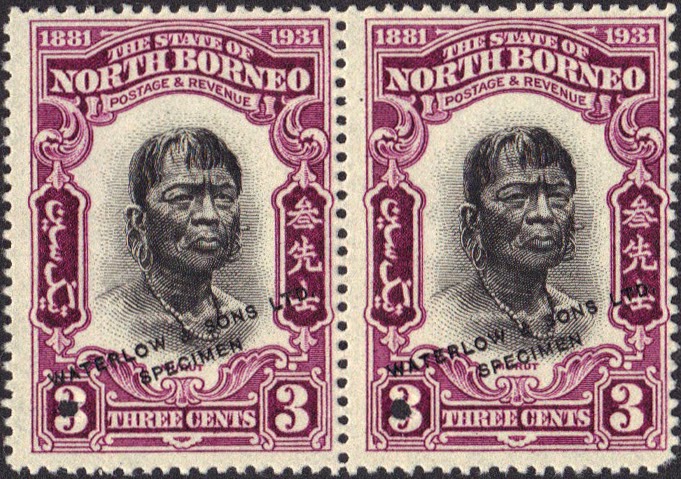To possess a genuine SG2 is like achieving the holy grail of North Borneo philately. We are not talking about a very expensive stamp here but it is very rare to find a genuine example and there are serious uncertainties about the vast majority of similar items on the market.
It has to be from the first lithographic printing known as transfer A and 12 on the perforation gauge. The details and background is well explored in part 1 of The Stamps and Postal History of North Borneo. In addition there are also doubts as to whether it should exist in mint as it is believed by well respected authorities on this subject that the surcharge was hand stamped at the post office as the need arose. Of course that would not prevent some enterprising individual from acquiring them personally from the post office in mint condition and not using them through the post. The other question was whether the surcharge was carried out at Kudat or Sandakan or both? Logically, I would chose Kudat as the printing facilities for the BNB Herald was there in 1883.
I can not plate this item with absolute confidence but I think it is stamp 36 of transfer A or A36 with the coloured flaw above second "O" of "Borneo". More important is the nature of the postal markings on this stamp. The crayon line was used to mark used stamps before the first postal cancellers for North Borneo arrived in early 1884. Some believed that it was used by companies to deface used stamps on envelope to prevent pilferage. But there was a strong possibility it was applied at the post office as similar markings were in use for many years universally.
We also have the Singapore K22 cancellation to signify overseas mail to that destination. More important than anything else is the relation of this and the crayon marking to the underlying "8 cents." surcharge. Having examined it closely, I am content that the crayon cancel overlies the surcharge and on top of it was the Singapore K22. It is also possible to have a genuinely used SG1 with a fake surcharge.
Update 5 12 2015 With the help of Lars Parsbaro's book, this is correctly plated as A32 of Transfer A and therefore is a genuine used example. This book cost £25 from the Sarawak Spceialists Society and should be consulted before buying a "SG2" from any dealer or auction. All the examples in recent major auctions were fakes.
On initial inspection I would not be happy with this adhesive which is on offer by a well known auction house. The perforations are the real giveaway. For some reasons, generally the perforations on transfer A stamps were very good compared to transfers B and C. This can be seen when comparing it with the first stamp above. As always there are exceptions. Secondly, with the lithographic transfer process, more flaws would appear in subsequent transfers. Transfer B would have more than A and C more than B, all perforation 12.
The above stamp has many defects in the printing process as highlighted. One can not be entirely sure but it is probably stamp 15 of transfer C or C15. Therefore it is a forgery. It comes with an old certificate for what it is worth.
Update 5 12 2015. This is B17 of Transfer B and therefore a fake. Bad perfs = Transfer B.
This adhesive has very poor perforations. There are many flaws that can be seen on this stamp. I have not attempted to plate it but it is almost certainly from transfer C. Therefore it is a forgery. Generally, it is very much safer to buy a good used version of this stamp with good perfs and clear postal markings in relation to the surcharge.
Update 5 12 2015. This is definitely B9 of Transfer B and definitely a fake.

On the other hand, this mint stamp could be the real thing. It was sold for US $2000 some years ago. This is a clearly printed item with good perfs all round which implies that it was probably from Transfer A. In addition it can be plated as stamp 34 or A34 with "broken frame of scroll to right of Postage". But if one is skeptical could this be a fake on a good copy of mint SG1 from Transfer A? Yes, a used copy is safer.
Update 4 12 2016. With Lars Parsbro's book, I can safely plate this as C32 with white spot top right side of "B" and 2 colured dots after "2". In addition, the part of lower circle of "8" is missing. This is therefore a fake surcharged adhesive using a Transfer C stamp with good perforations. Quite a few of the C stamps have good perforations. No genuine mint Transfer A SG2 is known to exist.




























